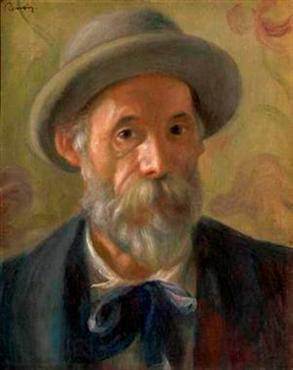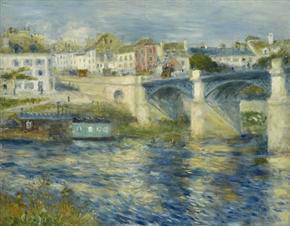
Pierre-Auguste Renoir
Self-portrait
Oil on canvas, 41,09 x 32,99 cm
h.1899
Williamston, Massachusetts, Sterling and Francine Clark Art Institute

Pierre-Auguste Renoir
Bridge at Chatou
Oil on canvas, 66 x 54 cm
h.1875
Williamston, Massachusetts, Sterling and Francine Clark Art Institute
‘Passion for Renoir’ at Prado Museum, Madrid A group of 31 works by the artist, which are the finest among the collection of paintings by Renoir assembled by the American collector Robert Sterling Clark, founder of the Sterling & Francine Clark Art Institute, are displayed at the Prado in the first monographic exhibition to be held on the artist in Spain
October 19th 2010 – February 6th, 2011
]]>
Source: Prado Museum
The artistic career of Pierre-Auguste Renoir (1841-1919), one of the leading figures of Impressionism, is characterised by an all-absorbing passion for painting that led him to achieve great renown and popularity among his contemporaries.
The core of the collection of paintings from the Clark Institute originates in the large group of Impressionist works assembled by Sterling and Francine Clark over the course of four decades. For the Clarks, Pierre-Auguste Renoir represented the quintessence of Impressionism and as a result they acquired more than 35 of his paintings, including some of his most important creations. Among them are the Self-portrait (ca.1875), a painting whose technique departs from Renoir’s habitual delicacy to offer a notably powerful expressivity; Portrait of Madame Monet (ca.1874), which spans the boundary between portraiture and genre painting and deploys an unconventional type of fragmented brushstroke; The Wash-House at Bas-Meudon (ca.1874), and The Bridge at Chatou (ca.1875), which are highly experimental landscapes dating from Renoir’s finest Impressionist period; “La Loge” (The Theatre Box) (1880), which uses strong tonal contrasts of blacks and whites and avoids the predominantly blue palette that had characterised Renoir’s work over the previous five years; Peonies (ca.1880), one of the artist’s most magnificent flower paintings and an example of the way in which he delighted in filling his canvases to the edges without leaving any empty space; Onions (1881), a fluidly painted and informal but carefully structured composition that was Sterling Clark’s favourite work by the artist; and The Bath (Girl arranging her Hair) (1885), one of the most precisely and exquisitely drawn of Renoir’s figures and the culmination of his mastery of the Impressionist technique
Through this exceptional loan of almost the entire collection, which will be shown for the first time as group outside the Clark Institute, the exhibition will allow the Spanish public to appreciate the breadth and importance of Renoir’s ideas through works from the most important phases of his career, between 1874 and 1900, and through the principal genres in which he worked, namely portraiture, the female figure, the nude, landscape, still life and flowers. These works reveal the contribution made by Renoir to painting of his own day as well as the profound nature of his links to the great pictorial traditions of the past.
Follow us on:

